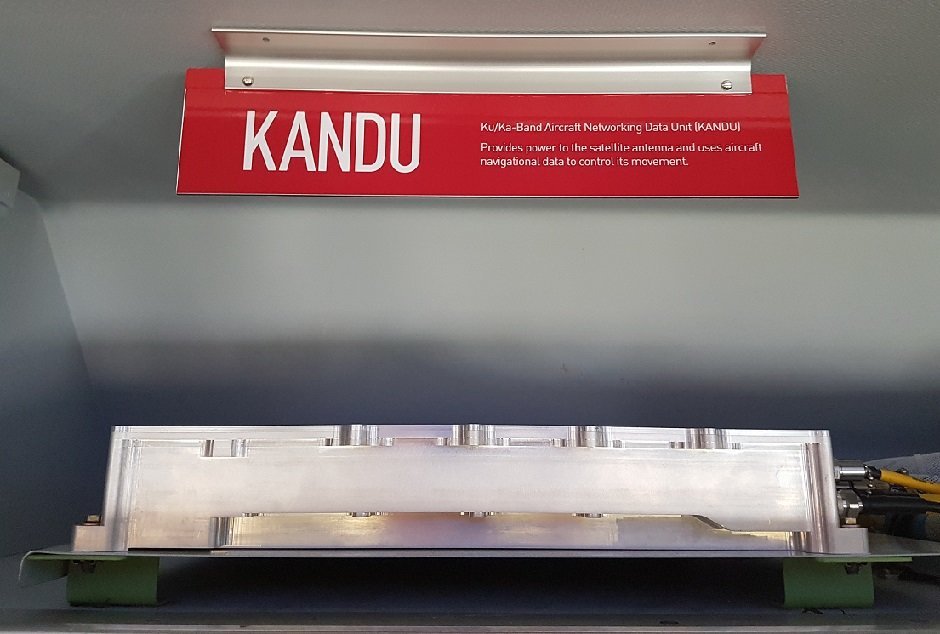Broadband at 30,000 feet: on board with Gogo's 2Ku
To reach an aircraft in flight, data travels from Gogo’s datacentre to one of a number of ground stations, from where it is beamed up to the satellite, then back down to two flat disc antennae (one up, one down) which are housed in a low-profile hump on the body of the plane, known in the trade as a radome, and then through the onboard equipment to the device.
The Kandu (Ku/Ka Aircraft Networking Data Unit) box pictured here sits within the aircraft, and physically controls the antennae, talking to the aircraft’s navigational systems to correctly gauge its position in the air and, therefore, which satellite it needs to connect to.
Obviously, location information is constantly changing as the plane travels along, so from time to time Kandu must hand-off from one satellite to another, disconnecting from one, reorienting the antennae, acquiring a signal from the new satellite, and re-establishing a data link back to the servers on the ground.
In the past this was a somewhat laborious process and on some older inflight internet systems, could take a considerable amount of time, certainly long enough that passengers would notice and grumble. These days it is a much smoother process.



